Many gardeners love the shallot bow for his soft, exquisite taste and pleasant aroma. He is not able to cause tears. For these qualities, culture is even called aristocrat among all types of onions. Often, gardeners are wondering how to grow the shallot bow correctly, and what conditions are necessary for this.
Content
Description of culture
The Latin name Allium Ascalonicum L plant got from one famous city in Palestine - Askalon. For the first time, the name is mentioned in the chronicles from 1261. Today, culture is successfully grown in many countries of the world - Greece, India, Egypt, in many regions of Russia, in Kazakhstan and Ukraine.
The bow-shallot not only belongs to the view of the onion of the Republic, but also in its properties and characteristics from it there is little different, except that he has a smallest bulb and he can be stored longer, not extinguished. Shalot - multi-bearing onions, from one seed can be born from 3 to 20 lukovki, each of which has a weight from 15 g to 40 g. Green with wax glitter feathers thinner and more rounded than other species of this culture. The bulbs in the Shalot are small (up to 50 g) and slightly elongated. The taste is gentle, juicy, not bitter, you can even say, sweet. It is used to prepare the most sophisticated dishes. Thanks to the large content of dry substances, onions are suitable for drying, it can be caramelized and marine.
Culture has a number of advantages and valuable qualities:
- due to the short vegetation period, the bulbs ripens early. It also eliminates the infection of Luke Peronosporosis and Shakova Gnill;
- feathers have properties to quickly track, and this favorably affects the ripening of the bulbs and facilitates the process of harvesting;
- shalot is well kept for a long time, almost all year round, does not allow arrows and does not rot;
- everlock light, without any problems;
- due to the large number of bulbs from one nest of the crop of Luca is always excellent. Each nest can give from 4 to 10, and sometimes up to 20 bulbs with a total weight of 150 to 300 g.
What a shallot bow looks like, you can see in the photo.
Luca varieties
Like other types of onions, the chalot can be early, secondary and late. Gardeners are often divided into 2 general groups:
- sports - this is a multigalar and rare view. It includes varieties with small and dense bulbs with dry scales of light yellow and yellow. The seed productivity of the variety is small, but it is distinguished by long storage;
- studies - the dates of ripening in the form can be both early and late. The bow of this species has large bulbs with yellow, purple, red and brown husks.
In addition, the plant is divided into the peninsula, sharp and sweet varieties. There are many varieties of this cult, but among them there are the most popular and sought-after:
- Early varieties:
- belozerets - the growing season lasts from 76 to 85 days. It has oval bulbs weighing up to 30 g. Taste sharp, but not bitter. It is better grown in the Caucasus;
- vitamin - the green feather is ready to collect already in 20 days after the first germs. The growing season lasts 70 days. Each nest matures up to 10 bulbs weighing in 30 g.
- Association varieties:
- airat - Suitable for growing in garden sites. From one nest, you can get up to 6 round bulbs weighing 15 g, and from 1 square meter. m assemble up to 1.6 kg;
- albik - has bulbs elongated weight up to 30 g each, you can collect up to 8 pieces from the socket. Albique gives a high harvest - up to 25 tons with each hectare. It is well kept, the growing period lasts 62 days. Can be planted under winter;
- andreyka is suitable for growing in garden sites. The bulb is elongated, weight up to 26 g, you can collect up to 1.8 kg from square. m.
- Lovely varieties:
- ural violet - recommended for growing onion-repka. It is pretty pretty large bulbs up to 60 g g g. It has a high yield - 165 c / ha. Grow well on most areas of the cultivation zones;
- amber Sibirsky - avegoing period lasts up to 60 days. The bulbs are round, slightly closed under the weight up to 30 g. The grade is suitable for cultivation in garden sites, gives up to 23 t / ha, recommended for cultivation in most regions of the cultivation of the bow.
Growing onion
The shallot bow rarely gives the arrows, so its cultivation of seeds is preferable to experts. But this does not mean that, if desired, gardeners will not be able to do it in their sites. Collecting independently seeds is very difficult, but they can be purchased in specialized stores. And if you still decide to get the seeds of Shalot yourself, follow this way:
- The bulbs of the highest quality should be selected, the storage period of which is at least 4 months at a temperature of +4 to +12 ° C.
- The bulbs are planted in an open ground in early May. After such a narrowing, they will quickly empty the arrows with flowers from which the seeds can be collected.
- The important condition of this process is not to plant the flashes of the Shalot near the bow of other species so that there is no transcender.
Selection of place and soil
The shallot bow, the cultivation of which has its own characteristics, is bred and for the sake of green feathers, and the sake of the bulbs themselves. To collect a good bows harvest, you need to choose the right place to land and carefully prepare the soil:
- This culture loves open sunny sections, unetermined by shrubs and trees. Choosing a place to land, be sure to consider it.
- Special attention should be paid to the soil. Shalot loves loose and non-acidic fertile soils. Acid soils are categorically not suitable for growing a shallot. On Luka, the leaves quickly yellow, and the bulbs in the end fill and dry. In areas where the groundwater is close to the surface of the earth, the chalot is properly grown with a good drainage.
- It is important to know which predecessors grew in areas planned under the chalot. It is recommended to plant a shallot after cabbage of all kinds, legumes, potatoes, zucchini, pumpkins, tomatoes and cucumbers. It is undesirable to plant onions where sunflower, corn, garlic, beets and carrots grew up. In the neighbors, Shalot is better to choose all types of salads, carrots, cucumbers, radishes, strawberries. They all bring benefits to each other. For example, carrots are able to scare onion mums with its smell, for which Shalot thanks carrots the same - does not allow carrot fly to hit a vegetable. But the growing row of legumes, greens, parsnips, broccoli, spinach, the turnip can coal the culture. Especially undesirable to plant a chalot near the onions, because they can cross, thereby losing their individual qualities.
- Before planting the Earth, it is necessary to dwell and well focus with the organic and minerals.
- At the same place to grow the shallot of seeds from seeds is not recommended for more than 3 years.
Growing a Shalot on green feathers
Shalot is perfect for growing on a green pen due to its rapid maturation. Greens are not inclined to start the arrows, long remains tender and soft. Leek Sore can not even compare with the profitability of the Shalot, and the seeds are required for this.
To assemble as much crop green pen, you need to know the following:
- It is possible to grow chalot on the pen on the open ground, as well as in greenhouses, greenhouses and even on loggias and window sills in pots.
- If you plant a culture at home, then you need to do it at the end of February. You can collect first harvest in a month.
- After cutting, the bulb can be reused. It should be removed from the soil, cut half and lower to the ground again. A month later, you will receive a repeated crop of juicy useful green.
- On the outdoor, the onions are planted at the end of April, and if under the winter, then at the end of October. Shalot easily tolerate freezing and cold. The first harvest of Shalot is also collected in a month when the height of feathers will reach 20-25 cm. Especially valuable in the early spring, when the body lacks vitamins.
Spring landing Shalota
Spring landing of Shalot is possible both on a green pen and on the repka. The whole process consists of the following steps:
- Cutting a culture at the end of April or in early May, but you need to prepare soil for planting in the fall. For this, the land is purified from weeds, jump, then fertilize with organic and minerals - humid or compost is needed in an amount of 5 kg per 1 kV. m, and superphosphates 70 g per 1 square meter. m. You can add some ash. After feeding, you need to form a garden at a distance of 20 cm from each other, which in the spring will remain well exploded and additionally fertilize nitrogen minerals in the amount of 25 g per 1 sq. M. m.
- Seeds need to prepare in advance for landing. To do this, they are placed in a gauze or cotton fabric, which is wrapped in the nodules and lowered into a container with water. Capacity needs to be covered so that the seeds are not dried. In this form, seeds are kept at a temperature of 22-25 ° C for about two days. Seeds need to be washed under running water every 6-8 hours, after which it is again lowered into a container with clean water.
- Before planting the seeds, it is necessary to dry out a little outdoors so that they crumble, after which they are sighable into the bed prepared in the fall and fall asleep the earth. From above, it is desirable to sprinkle the beds with peat or overworked compost.
- Circums with crops need to pour well.
- After 20-25 days, with favorable conditions and proper care, the first crop of greenery can be collected.
- For the first year, the seeds will give a bulk, consisting of 5-6 small bulbs, which after drying it will fall apart. These bulbs are planted for the next year to obtain larger and numerous bulbs, which in turn will be suitable for vegetative reproduction no more than 5 years. After that, the planting material is renewed again to maintain quantity.
Salot landing under winter
Even despite the good stability of the shalot to the loud frost, it is recommended to plant it in the southern regions. In medium latitudes, yield will be no more than 50-60%. The plant is sickly in the fall to obtain green feathers in early spring and begin the process in mid-October, so that the seeds are strengthened in the ground, but they did not have time to give sprouts to the first frosts:
- The plot chosen under the crop is cleaned from dried herbs.
- In the overwhelmed primer contributes compost from overcoating leaves or manure and form the beds at a distance of at least 20 cm from each other.
- Seeds do not need to be prepared, they are simply evisted in prepared beds and raise the earth.
- For the winter, the squeezed plot is covered with film so that the seeds are not frozen.
Loos care
The culture after landing requires a certain care, which consists of the following steps:
- The first time sowing will need regular moisture in the process of the entire vegetative period. For 3-4 weeks before harvesting, watering can be stopped so that the feathers manage to dry and fade.
- There is a prerequisite for regular weeding and soil looser. Weeds grow quickly, scoring onion shoots.
- When the bow stops the first sprouts, it will be possible to help the nitrogen minerals, overloading manure or urea. Beginners to form bulbs will need potash fertilizers, ash and chicken litter.
- If you want to get a rake larger, you will need to go onions. In early July, it is necessary to carefully remove minor bulbs directly with feathers, leaving 5-6 large bulbs in the nest. Remote feathers can be used.
- Onions are rarely amazed by diseases, but it can occur if the cold wet weather will delay. In such cases, the affected onion is removed, and the remaining bushes are treated with antifungal drugs. With leaning onion with white worms, it is treated with a solution of water with a cook salt in a ratio of 1:10. Onion flies can be scared, spraying over the grooves of ash.
- You can collect harvest at the end of July. By this time, the bulbs are fully matured.
The shallot bow, the cultivation and care of which will be not very burdensome, will give an excellent harvest, provided that all of the above recommendations are fulfilled. And how to remove and store the shalot bow can be viewed on the video.

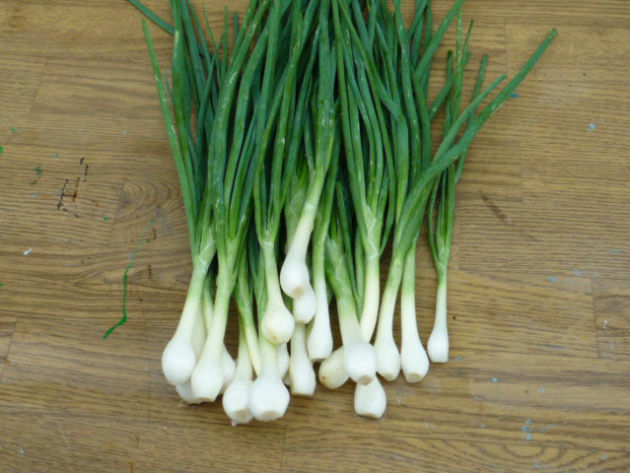
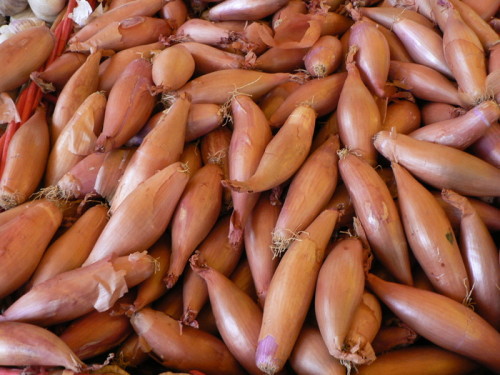
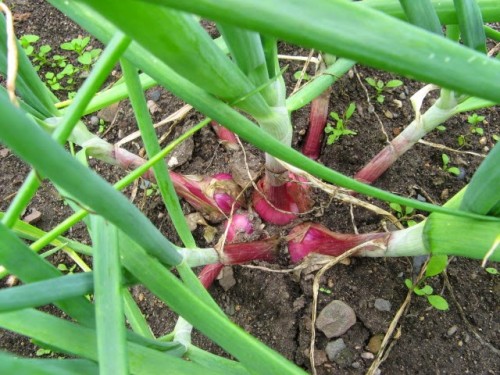
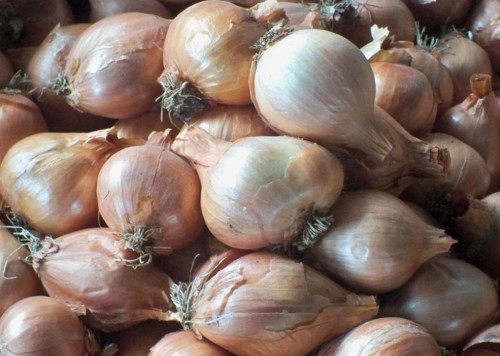
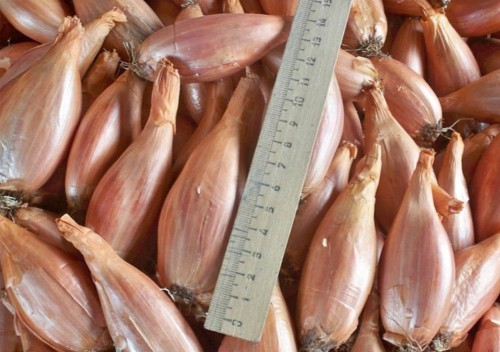
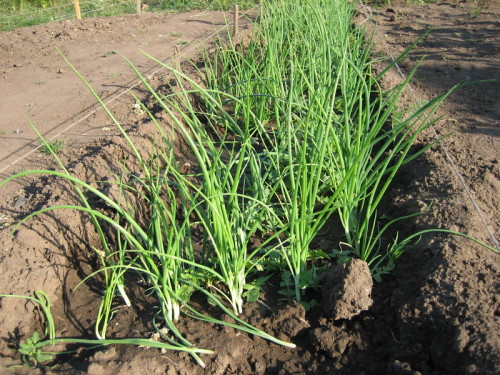

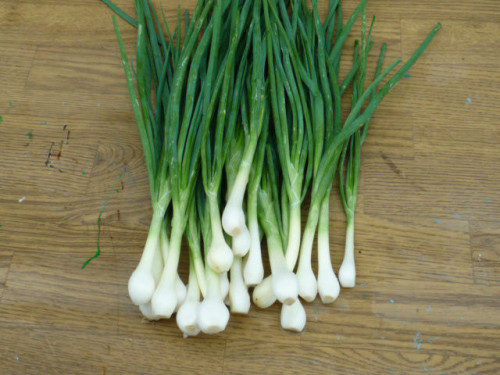
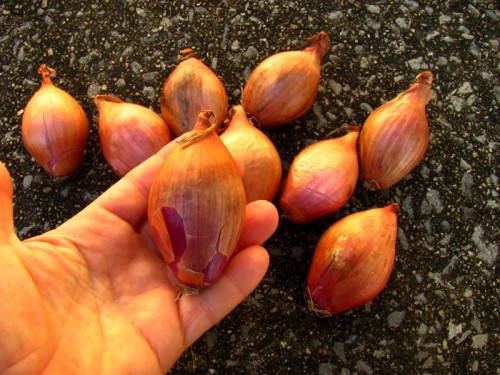












 Start a discussion ...
Start a discussion ...